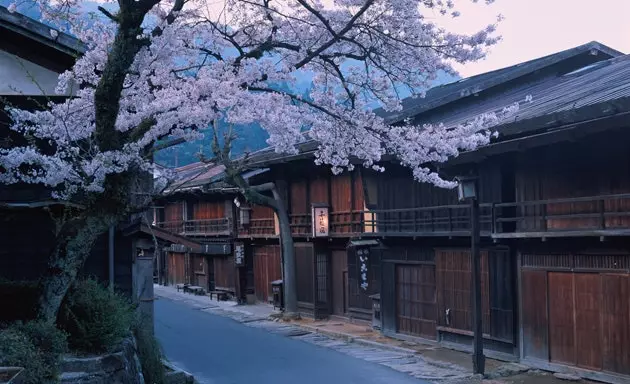
Tsumago
"You have to lose your fear!" . The representative of the IberoJapan travel agency, Masaru Mikami, has come to Spain with a clear message: his company has registered 95% less Spanish tourists this last year and you have to get them back. According to data from the ** Japan National Tourism Office, ** from January to November 2011 the decrease in international tourists in Japan has been 29.1%, but with figures that have been improving every month; On the other hand, if we focus the study on the Spanish tourist, from January to September 2011 the index fell by 59.2%... shyness can overcome us.
After the critical information and microphone in hand, only accompanied by spectacular photographs, Masaru Mikami talks about a different Japan, the B side of the country . The businessman emphasizes that Japan that is not found in Kyoto or Osaka or Tokyo: Shirakawago and its traditional straw houses, Nara and its giant Buddha, Magome with its 16th century samurai buildings, natural hot springs and Hakone Outdoors... an interior Japan where the illuminated signs of Tokyo are exchanged for silence and Shibuya cosplay by small towns of samurai tradition. But how has this destination performed since March 2011?
Japan became a difficult destination, a more isolated island, due to the fear of suffering risks on the trip after the natural disaster in March last year. Expressions such as 'radiation', 'complications', 'damaged infrastructures', 'difficulty in communications'... caused tourism to the Japanese island was reduced by 60% in April 2011 . However, the latest data provided by the Paris Director of the ** Japan National Tourist Office, Mr. Koichi Miyazawa,** are encouraging: Japan has recovered the level of visits by 80% since the catastrophe . And it is that the recovery capacity of the Japanese people can practically be called a 'miracle'.
The slides of the 'before and after' begin to pass before the stunned gaze of those attending this conference in Fitur: the cracks in the asphalt of the roads were repaired (if not remade) in a matter of six days; Sendai Airport re-established civil flights within a month and full operations at the end of September 2011 ( only six months after the catastrophe, Sendai was operating at 100% of its normal activity ) ; the cities most affected by the tsunami came back to life three months later; It only took four weeks to reestablish the train lines that support the eastern part of the island... Miracle? Yes, after much efficiency.
But the effectiveness does not detract from the fear of the Fukushima situation . One of the biggest concerns, if not the biggest, is radiation (the Chernobyl nuclear accident has undoubtedly set a precedent). The Japanese Ambassador to Spain, Satoru Satoh, affirms that the Fukushima reactors are in the cooling phase and that 'only' the clean-up stage would remain... bearing in mind that the Fukushima waste may take between 20 and 30 years to be completely eliminated . As for the areas affected by radioactivity, there is an area of 20 kilometers around the nuclear power plant with limited access and between 30 and 40 kilometers radiation spikes "are significant but do not affect health" , in the words of the ambassador.
